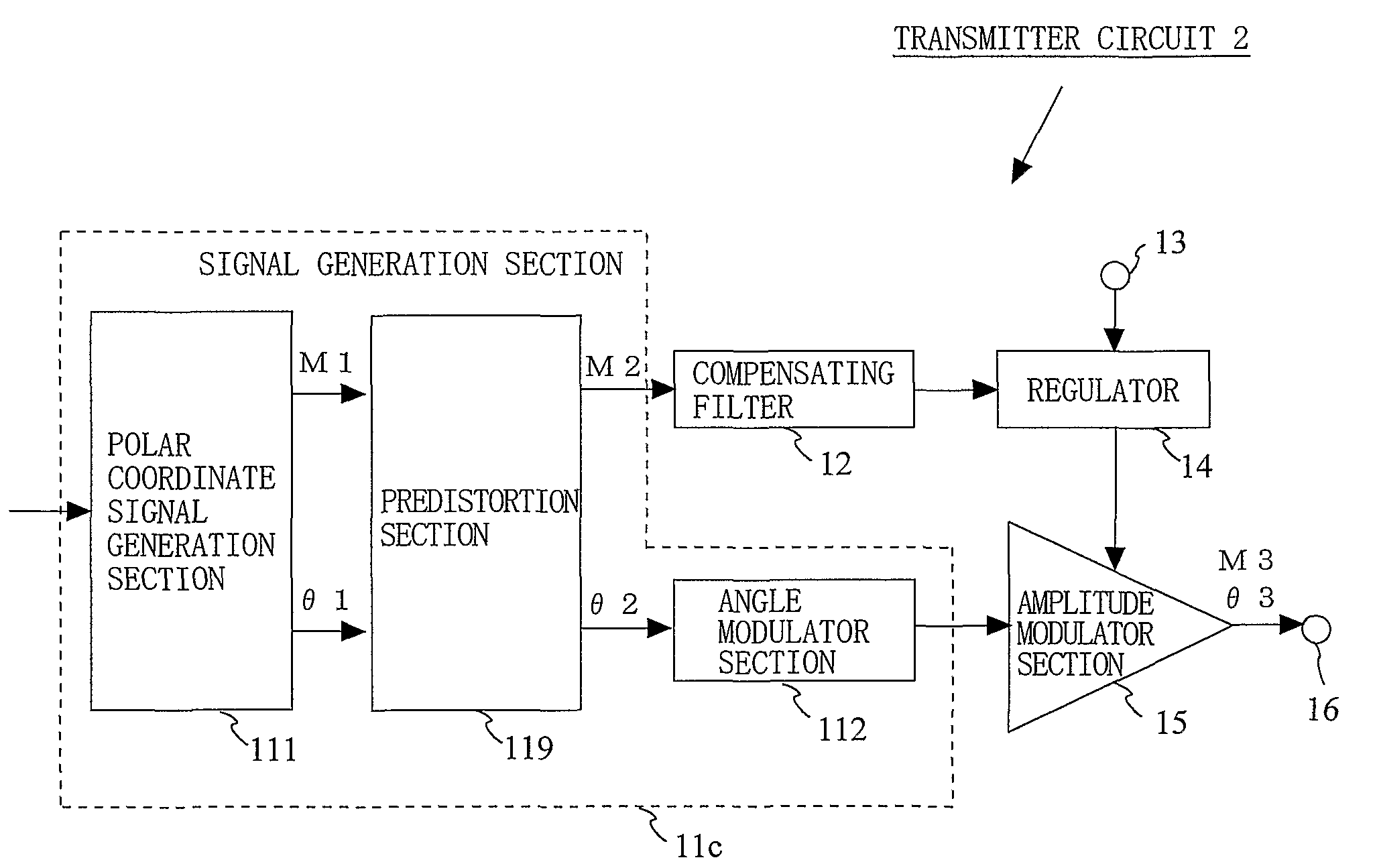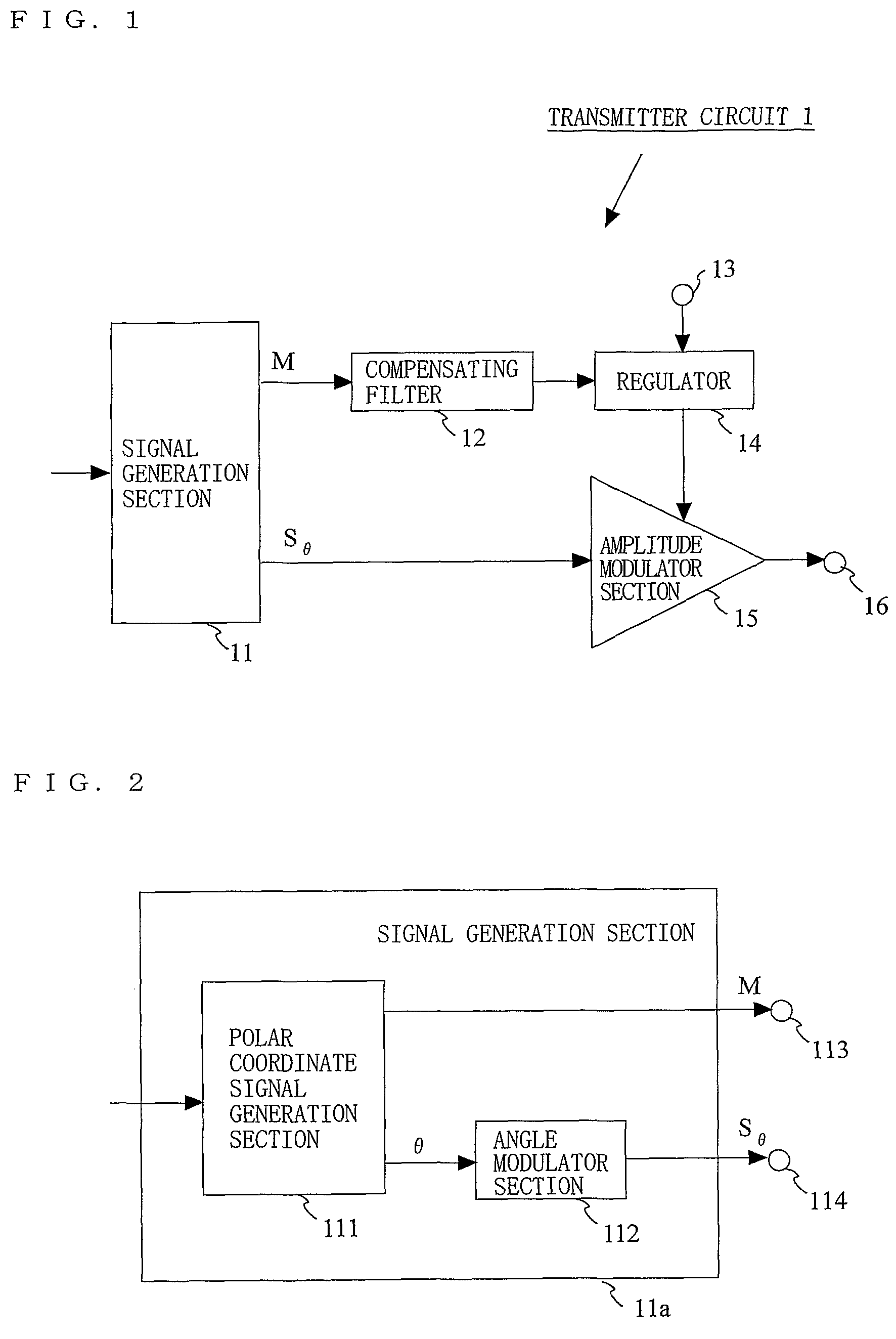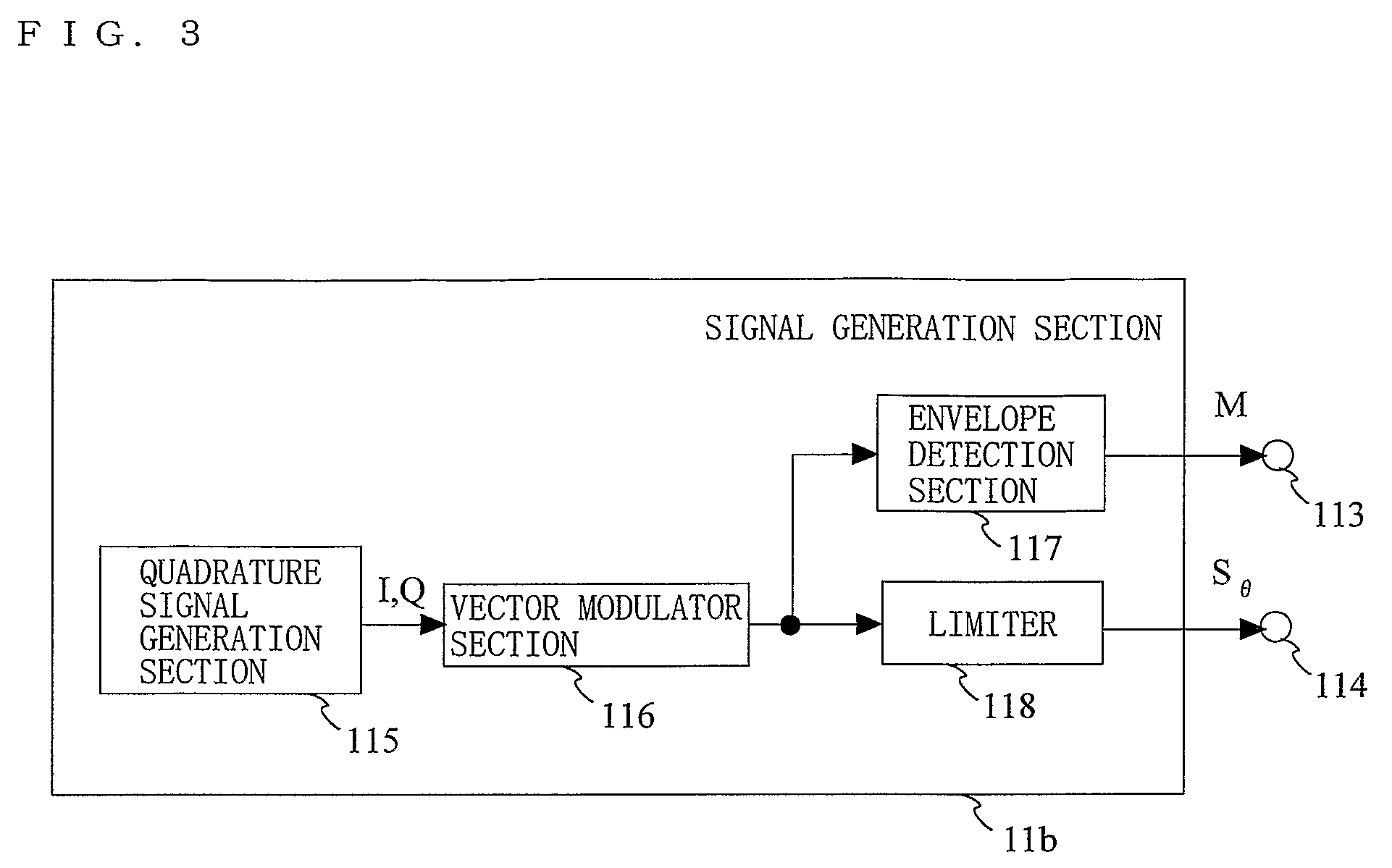Polar modulation transmitter circuit and communications device
a transmitter circuit and polar modulation technology, applied in the field of transmitter circuits, can solve the problems of increasing device size and power dissipation, low power efficiency of linear amplifiers, and short operating time, and achieve the effects of low distortion, high efficiency, and suppressing distortion
- Summary
- Abstract
- Description
- Claims
- Application Information
AI Technical Summary
Benefits of technology
Problems solved by technology
Method used
Image
Examples
first embodiment
[0056]FIG. 1 is a block diagram illustrating an exemplary configuration of a transmitter circuit 1 according to a first embodiment of the present invention. In FIG. 1, the transmitter circuit 1 includes a signal generation section 11, a compensating filter 12, a power source terminal 13, a regulator 14, an amplitude modulator section 15, and an output terminal 16. The signal generation section 11, based on an amplitude component and a phase component obtained by signal-processing input data, outputs an amplitude signal M and an angle-modulated signal Sθ. The amplitude signal M is wave-shaping-processed and thereafter is inputted to the regulator 14. The regulator 14 outputs a signal controlled by the inputted amplitude signal. Typically, the regulator 14 outputs a signal in proportion to a magnitude of the inputted amplitude signal. The signal outputted by the regulator 14 is inputted to the amplitude modulator section 15.
[0057]The angle-modulated signal Sθ is inputted to the amplit...
second embodiment
[0087]FIG. 14A is a block diagram illustrating an exemplary configuration of a transmitter circuit 2 according to a second embodiment of the present invention. In FIG. 14A, the transmitter circuit 2 includes a signal generation section whose configuration is different from that in the first embodiment. The signal generation section 11c includes a polar coordinate signal generation section 111, a predistortion section 119, and an angle modulator section 112. In FIG. 14A, the predistortion section 119 compensates an amplitude signal M1 and a phase signal θ1 which are generated by the polar coordinate signal generation section 111 so as to suppress distortion caused in at least any of a regulator 14, an angle modulator section 112, and an amplitude modulator section 15.
[0088]Specifically, the predistortion section 119 distorts a previously inputted signal using a predistortion table so as to have an inverse characteristic of a magnitude (AM / AM characteristic) of an envelope of a transm...
third embodiment
[0094]FIG. 18 is a block diagram illustrating an exemplary configuration of a transmitter circuit 3 according to a third embodiment of the present invention. In FIG. 18, in the transmitter circuit, a signal generation section 11c and a regulator 14d are different from those in the transmitter circuit 1 according to the first embodiment of the present invention. Unlike in the transmitter circuit 1 according to the first embodiment, the signal generation section 11c further outputs power information P which is set based on a base band section of the transmitter circuit 3. The regulator 14d includes a series regulator 14a and a switching regulator 14b. A configuration of the series regulator 14a, for example, is shown in FIG. 14. A configuration of the switching regulator 14b, for example, is shown in FIG. 5.
[0095]The power information, for example, in a case of a W-CDMA system, is controlled by a base station. In other words, required power is sent from the base station to the transmi...
PUM
 Login to View More
Login to View More Abstract
Description
Claims
Application Information
 Login to View More
Login to View More - R&D
- Intellectual Property
- Life Sciences
- Materials
- Tech Scout
- Unparalleled Data Quality
- Higher Quality Content
- 60% Fewer Hallucinations
Browse by: Latest US Patents, China's latest patents, Technical Efficacy Thesaurus, Application Domain, Technology Topic, Popular Technical Reports.
© 2025 PatSnap. All rights reserved.Legal|Privacy policy|Modern Slavery Act Transparency Statement|Sitemap|About US| Contact US: help@patsnap.com



